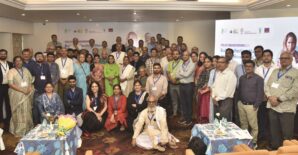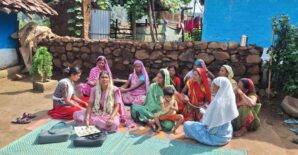Covid-19 and the lockdown have brought agriculture to the forefront of policy discourse. Just when the open-endedness of Aatma Nirbhar Bharat started to ring a bell, came the elaborate package for agriculture. Several analysts and commentators then adjudged this as a watershed moment for agriculture. Much has been talked about it since, inter alia on the extent of fund commitment, the policy reforms related to the Essential Commodities Act, and amendment in marketing laws.
Cluster-based approach for micro food enterprises
Small and micro-enterprises with 0 or <5 employees dominate the enterprise in low and middle-income countries. India has more than 60 million of these, and 20 million are in the food sector. These small food enterprises employ 25 million men and nearly 10 million women as entrepreneurs and workers and support 150 million people. India has about 120 million. In fostering recovery, it is important to realise that these enterprises, and not agriculture, drives the growth in India’s food economy. Between 2010-11 and 2015-16, their gross value added increased at 24% per year compared to a meagre 2% in the agricultural GDP. An overwhelming share of these enterprises are informal. Hence, their formalisation and is probably the most underrated proposal in the package.
The package also emphasised a cluster approach for the food enterprises, ie, the idea of developing commodity-specific clusters like makhanas from Bihar, kesar from Kashmir and tapioca from Tamil Nadu. In such a cluster, units could be horizontally or vertically linked. The success, professor Michael Porter of Harvard Business School says, depends on how enterprises interact with one another, and how enterprises interact with each other depends on the extent of formalisation. Hence, the cluster approach to food enterprise development must undertake a massive pre-step of formalisation, a tall order given the numbers and the fact that the average life is just three years.
The food enterprises are further envisioned to position themselves in the context as “Vocal for local with Global outreach”. Rime richissime indeed, but much more is needed for crossing the local-global viaduct. Some statistics underscore the realities confronting food enterprises. Much smaller countries like Thailand and Egypt do better in horticultural exports, India’s position as the second-largest horticultural producer in the world notwithstanding. Despite being a comparatively small exporter in food, India faces the highest number of consignment rejections from the US and Europe. Food, like any other product with credence attribute, is driven by reputation effects. In domestic as well as international markets, the food enterprises have their task cut out in terms of building a reputation for delivering on quality and safety. Unless India comes up with good agricultural practice (GAP) norms and enforces them, much-needed credibility, and reputation for going global would not be possible. If the package were to stipulate on quality and safety standards, set out a blueprint for GAP and other standards, one could see a prospect for the food enterprises.
Given the history and tenets of consumer psychology, more vocal for local has happened only when the local has a global reach. In the current scenario, unless the farmers, FPOs, SHGs and cooperatives are trained to deliver on attributes local to global will not be tenable. One-size-fits-all type interventions may not work in the promotion of these clusters. Farmers also need to have real-time information on niche commodities and their prices to be able to tap on global export markets. Like Grapenet with registering of farmers and real-time information and monitoring on needed practices, there should be many other nets, Anarnet, applenet and others. These systems involve fixed costs that disadvantage small farmers. Hence, suitable aggregation models that anchor on safety, quality and health attributes are needed for local to global outreach models.
Devesh Roy is a Senior Research Fellow with the CGIAR Research Program on Agriculture for Nutrition and Health (A4NH). Mamata Pradhan is a Research Collaborator with IFPRI. The analysis and opinions expressed in this piece are solely those of the authors.
This piece was originally published in Financial Express here




